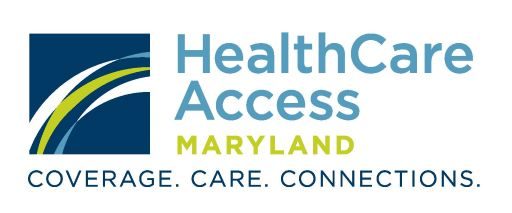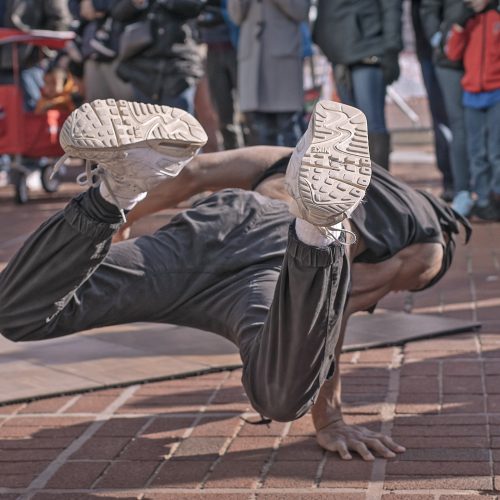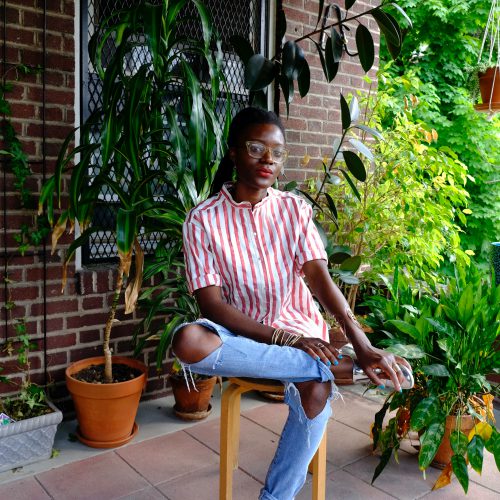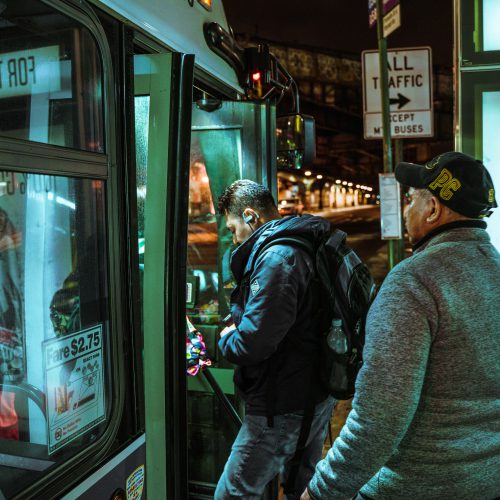With the COVID-19 vaccine now available to frontline healthcare workers, HealthCare Access Maryland’s Marketing & Business Development Manager, Jordan Sosanya, had the opportunity to talk with a Maryland frontline healthcare worker who has received the COVID-19 vaccine. Jill Dannenfelser, a Registered Nurse who has served in the medical transport field for twelve years, works on the Critical Care Transport team at the University of Maryland Medical Center.
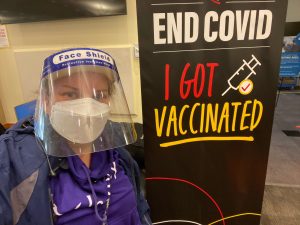 In her role, Jill works on an ambulance daily, moving patients between hospitals throughout the state. Many community hospitals do not have the resources to care for more complex cases. Jill and her team are responsible for safely transporting patients to a hospital with the capacity for a higher level of care.
In her role, Jill works on an ambulance daily, moving patients between hospitals throughout the state. Many community hospitals do not have the resources to care for more complex cases. Jill and her team are responsible for safely transporting patients to a hospital with the capacity for a higher level of care.
Jill received the first dose of the Pfizer vaccine on December 21st, 2020, and the second dose on January 11th, 2021. Read below to hear more about Jill’s experience receiving the COVID-19 vaccine and why she is encouraging all Marylanders to receive the vaccine when it becomes available.
Tell us about the process of receiving the vaccine. Did you have any side effects?
The process was seamless. The University of Maryland Medical Center is doing a fantastic job. I received an email saying my turn to receive the vaccine was coming up, and I went online and registered for it. When I arrived to receive the vaccine, I checked in on a computer and then went to the “holding area” that was spread out with proper social distancing. People who worked there had their safety vests on to answer any questions and direct you to where you needed to go. After you received the vaccine, you had to sit for 15 minutes to be observed. This is a standard nationwide procedure to make sure you don’t have any reactions from the vaccine. The symptoms were no worse than symptoms from any other vaccine I’ve received. My arm was sore, and I was tired for 24 hours. My second dose of the vaccine was even easier than the first. I had no symptoms at all and my arm is not even sore.
Tell us about your experience treating people during the pandemic.
Scary. Scary in the fact of how sick people were. On the Critical Care Transport team, we see the sickest of the sick. Patients that come to us need additional help that an outside hospital can’t fulfill. I’ve also seen a lot of COVID-19 patients. It was scary that the COVID-19 patients were people just like me. It wasn’t just elderly people or people who have comorbidities. On top of that, the recovery process for COVID-19 is long. Even if the person was feeling better, it still took them some time to recover and get back to normal to be the 100% they were before they got sick.
How does receiving the vaccine impact the way you can provide care?
In truth, I will not change anything about the way I provide care. I will put my patient’s safety as a priority. I will still be wearing the same amount of PPE and remaining as safe as possible. It’s a huge relief knowing I have the vaccine and that I will be able to report to work. It scared me that if I came down with COVID-19, I could be out for weeks or months. [The thought of] not being able to help my patients and provide for them made me feel useless.
What do you want your patients to know about receiving the vaccine?
Go and get it! As soon as it’s available to you, get this vaccine. I was completely confident to get the vaccine. I want my patients to know that COVID is terrifying but we all will have the opportunity soon to get the vaccine and protect everybody. I got my vaccine for my kids and my dad.
The state of Maryland has designated five different priority vaccination groups based on relative risk of exposure or developing serious illness. To learn more about the COVID-19 vaccines and priority group phases, please visit https://covidlink.maryland.gov/content/vaccine/#1608736642244-8ae8e9d7-1c75. To receive alerts, tips, and other resources related to COVID-19 text MDReady to 898-221.
